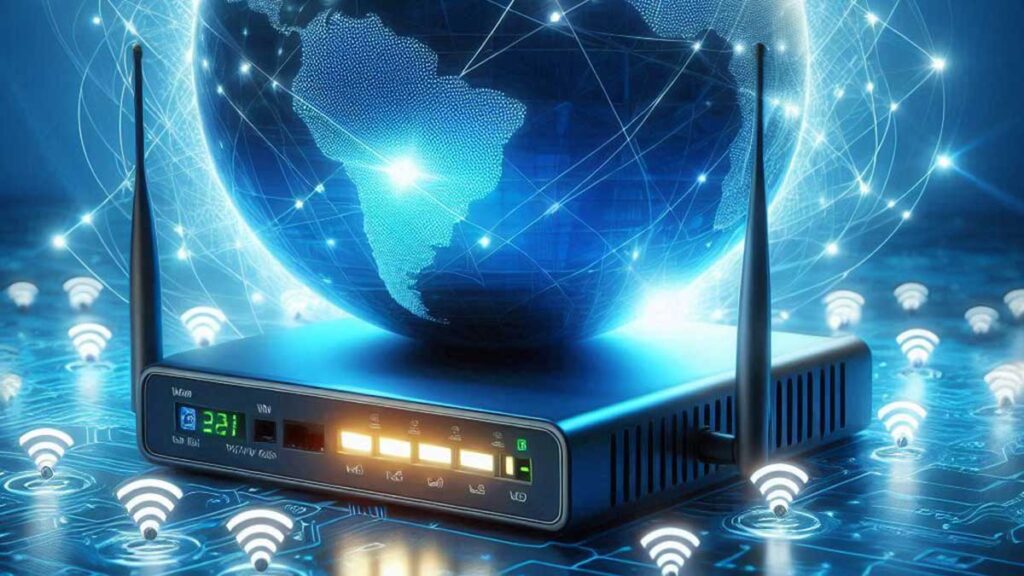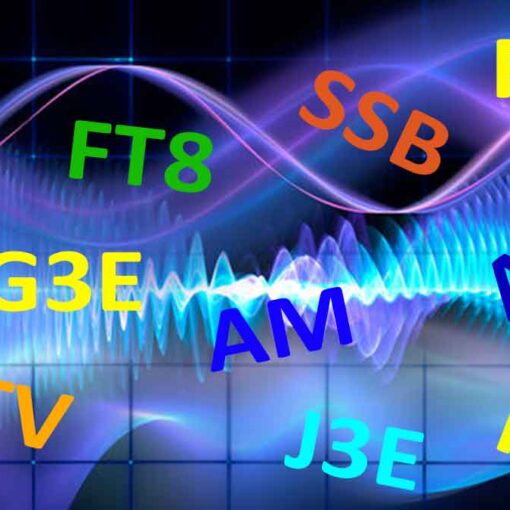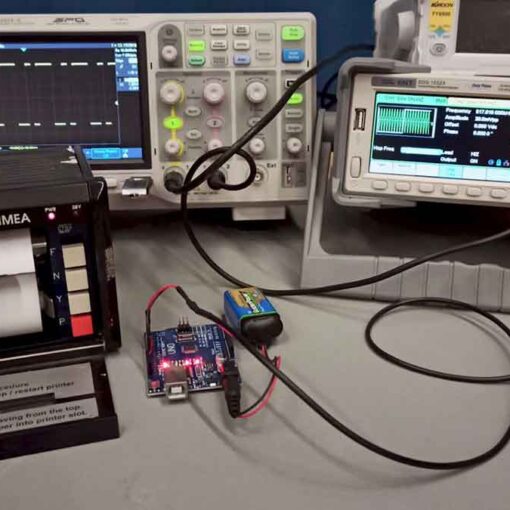Choose the perfect Wi-Fi for your network
Choose the perfect Wi-Fi for your network
Do you remember the time when we connected to the Internet using a modem that sang like an exotic bird? Since then, wireless networks have undergone an incredible evolution. Today, Wi-Fi is an integral part of our lives. But how much do we know about the various standards behind this technology? Let’s dive into the world of Wi-Fi. Let’s find out how these standards have evolved and how they affect our daily lives.
What is WiFI?
Wi-Fi is like a radio, but instead of transmitting music, it transmits data according to certain rules called standards.
Wi-Fi technology includes several different such standards. Versions that differ in data transmission speed, range and other characteristics are also defined for easy recall. Here are some of the main types of Wi-Fi:
- 802.11b: This standard was the first to be introduced and provides speeds of up to 11 Mbps in the 2.4 GHz frequency range. However, it is now somewhat out of date and rarely used.
- 802.11a: This standard provides speeds of up to 54 Mbps, but uses the 5 GHz frequency band. It offers less interference than other Wi-Fi standards, but its range is shorter.
- 802.11g: This standard provides speeds of up to 54 Mbps and uses the 2.4 GHz frequency band. It was very popular and is widely used in home and small business networks.
- 802.11n: This standard, also known as Wi-Fi 4, provides significantly greater speed and range than previous standards. It can deliver speeds of up to 600 Mbps and operates on both 2.4 GHz and 5 GHz.
- 802.11ac: Also known as Wi-Fi 5, the 802.11ac standard provides even greater speeds and supports the 5 GHz frequency range. The maximum speed can reach several gigabits per second.
- 802.11ax: Known as Wi-Fi 6, this standard offers significantly greater speed and efficiency, especially in densely populated networks. It supports both 2.4 GHz and 5 GHz frequency bands.
- 802.11ay: This standard, called Wi-Fi 6E, is an extension of Wi-Fi 6 and uses the 6 GHz frequency range. It promises even greater speeds and range, but it’s still not as widespread.
- 802.11be: Wi-Fi 7 is also known as Extremely High Throughput (EHT). It operates in all three bands (2.4 GHz, 5 GHz and 6 GHz). Wi-Fi 7 aims to deliver blazing speeds for every device with greater efficiency. Wi-Fi 7 introduces ultra-wide bandwidth of 320 MHz, 4096-QAM, Multi-RU and Multi-Link Operation with speeds 4.8 times faster than Wi-Fi 6 and 13 times faster than Wi-Fi 5.
These are some of the basic Wi-Fi standards. There are other improvements and versions that appear as technology evolves. Choosing the appropriate standard depends on the specific needs and requirements of the network.
Choose the perfect Wi-Fi for your network
So that you don’t wonder what those letters and numbers are on routers and adapters, here’s a tabular comparison of the last few standards:
| Standard | Wi-Fi 4 | Wi-Fi 5 | Wi-Fi 6 | Wi-Fi 6E | Wi-Fi 7 |
| On sale | 2009 | 2013 | 2019 | 2021 | 2024 |
| IEEE Standard | 802.11n | 802.11ac | 802.11ax | 802.11ax | 802.11be |
| Maximum data rate | 600 Mbps | 3.5 Gbps | 9.6 Gbps | 9.6 Gbps | 46 Gbps |
| Strips | 2.4 GHz, 5 GHz | 5 GHz | 2.4 GHz, 5 GHz | 2.4 GHz, 5 GHz, 6 GHz | 2.4 GHz, 5 GHz, 6 GHz |
| Channel Size | 20, 40 MHz | 20, 40, 80, 80+80, 160 MHz | 20, 40, 80, 80+80, 160 MHz | 20, 40, 80, 80+80, 160 MHz | Up to 320 MHz |
| Modulation | 64-QAM OFDM | 256-QAM OFDM | 1024-QAM OFDMA | 1024-QAM sOFDMA | 4096-QAM OFDMA (with extensions) |
| MIMO | 2×2 MIMO | 4×4 MIMO DL MIMO | 8×8 UL/DL MU-MIMO | 8×8 UL/DL MU-MIMO | 16×16 UL/DL MU-MIMO |
| RU | / | / | RU | RU | Multi-RUs |
| MAC | / | / | / | / | MLO |
Notes
- MIMO: this is like having multiple lanes to transmit data at the same time, which increases speed. To appreciate the multi-lane speed difference, imagine the Hemus Freeway and a closed tube on one of the repair tunnels. The acceleration due to the constriction decreases, sometimes even stops.
- OFDM: Type of modulation. Imagine a bus that transports passengers to a variety of different destinations. This achieves a more efficient use of the bus, and with Wi-Fi of the channel.
- RU: Resource Unit – frequency resource allocation unit. Think of it as a separate lane on a highway. When many devices want to use the network at the same time, RUs help distribute data more efficiently so that all devices can move quickly enough.
- MAC: Media Access Control – a protocol that controls access to a common data transmission medium. Think of the MAC protocol as a kind of “policeman” or “traffic light” of the network. It defines the rules for how different devices connected to the same network can share that network without bumping into each other. For example, when many devices want to send data at the same time, the MAC protocol decides who gets access first and how to avoid data collisions. It regulates the movement of “cars” (in this case data) so that they can pass through the intersection safely without colliding.
Conclusions
Wi-Fi 4 vs. Wi-Fi 5: Wi-Fi 5 offers significantly higher speeds and better coverage, making it ideal for demanding devices such as smartphones and tablets.
Wi-Fi 6 vs. Wi-Fi 7: Wi-Fi 7 promises to revolutionize wireless networks with even faster speeds, lower latency and greater capacity.
Wi-Fi 6: Ideal for large families with many devices streaming video, playing online games and working from home.
Wi-Fi 7: The future of VR and AR, where low latency is key.
What can we expect in the future?
Although there is no official information about the next generation of Wi-Fi, we can expect it to continue the trend towards higher speeds, greater capacity and lower latency. Some potential areas of development include:
- Higher frequency ranges: Using higher frequency ranges may allow even higher speeds, but may also result in shorter range.
- Smarter networks: Future Wi-Fi standards may include self-tuning and self-optimization features, which will make networks easier to manage.
- Better integration with other technologies: Wi-Fi can integrate more closely with other technologies such as 5G to create hybrid networks that offer the best of both worlds.
- Industrial IoT: Wi-Fi in manufacturing and automation.
- Smart cities: Wi-Fi to connect different devices and sensors in the urban environment.
- Cars: Wi-Fi in cars for connectivity and autonomous driving.
5GHz and 5G: Two very different things
Many people confuse 5GHz and 5G, which is quite normal as they sound very similar. I’ve noticed that ISP technicians sometimes speculate on this. They tell customers that they will install a 5G router for them. This is actually not true – they put a router that has a 5GHz frequency band.
Let’s take a closer look at these two technologies to make everything clear.
- 5GHz: This is a frequency range used in Wi-Fi wireless networks. When you see that your router supports 5GHz, it means that it can transmit and receive a signal at that frequency. 5GHz networks generally offer higher speeds and less interference than 2.4GHz networks because they are not yet congested but have a shorter range.
- 5G: This is a generation of mobile network that provides much higher data transfer speeds, lower latency (delay) and the ability to connect many more devices simultaneously. 5G uses different frequency ranges, including higher than 5GHz, to achieve these results.
Why do people confuse them?
- Similar sounding names: 5GHz and 5G sound very similar, leading to confusion.
- Both are related to wireless networks: Both technologies are used for wireless communication, further blurring the distinction.
- Some 5G devices often also support 5GHz Wi-Fi: Some smartphones and other devices that support 5G can also connect to 5GHz Wi-Fi networks, adding to the confusion.< /li>
What is the difference between 5GHz and 5G?
| Feature | 5GHz | 5G |
| Network Type | Wireless network (Wi-Fi) | Mobile Network |
| Frequency range | About 5GHz | Various frequency ranges, including higher than 5GHz |
| Speed | Higher than 2.4GHz Wi-Fi but lower than 5G | Much higher than 4G and 5GHz Wi-Fi |
| Scope | Less than 2.4GHz Wi-Fi | Greater reach and coverage |
| Devices | Routers, computers, smartphones, tablets | Smartphones, IoT devices, cars, etc. |
Why is it important to know the difference?
- Choosing the right network: When choosing a network for your device, it is important to know whether you are looking for a 5GHz Wi-Fi network or a 5G mobile network.
- Optimizing speed and coverage: Understanding the differences between 5GHz and 5G can help you choose the best network for your needs.
- Understanding Future Technologies: 5G is a new and rapidly developing technology that will change the way we use the Internet.
Summary
5GHz and 5G are two different technologies, although they sound similar. 5GHz is a frequency range used for Wi-Fi networks, while 5G is a mobile network generation. Although both offer high speeds, they have different features and applications. Mobile operators offer routers that support 5G for mobile Internet and transfer it to 2.4 GHz, 5 GHz and wired local (home) network for Internet access.
Dangerous or not?
The safety of Wi-Fi networks, especially the new 5G technologies, is a topic that often causes a lot of debate. While it is important to be informed about the potential risks associated with any technology, it is equally important to separate fact from speculation. Scientific research to date has not established a definitive link between exposure to radio frequency waves from Wi-Fi networks and any health problems. Many of the concerns spread in the media are often based on isolated cases or unsupported claims. Clearly, commercial interests are involved in speculation about the health hazards of specific wireless technologies. The bigger danger lies in cyber security and it is now mandatory to follow basic cyber security rules such as using strong passwords and regularly updating the software on routers and other devices to prevent unauthorized access to the network.
Choose the perfect Wi-Fi for your network!
Conclusion
Wi-Fi technology has come a long way from the first experimental networks to today’s high-speed and reliable connections. With each new standard, we move closer to a world where wireless Internet is as fast and stable as a wired connection. Although Wi-Fi 7 is the latest standard, development does not stop there. What do you think the future of wireless technology will bring us? Will we see networks that can support millions of devices simultaneously, or will we create wireless networks that cover entire cities? The possibilities are endless.




